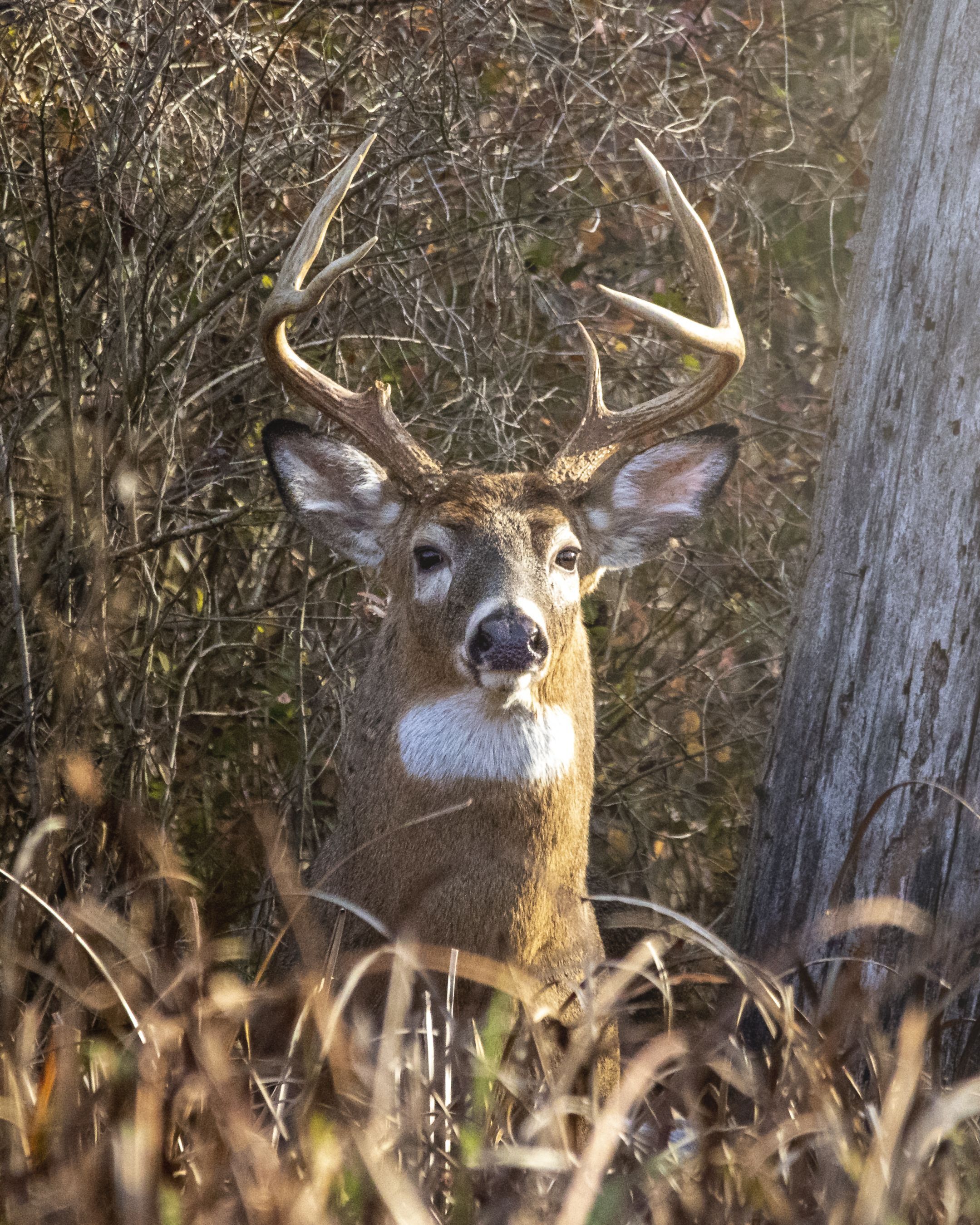
Fall is for Habitat: How Ohio Landowners Can Boost Wildlife This Season
As the leaves change and the fields quiet down, fall is one of the best times of year for Ohio landowners to improve wildlife habitat. While spring often gets the spotlight for planting and planning, many of the most effective conservation practices begin in autumn—when the soil is still warm, the air is cool, and wildlife is preparing for the long winter ahead. Whether you own a few acres or a full farm, here are some ways you can make the most of the season to support deer, turkey, songbirds, pollinators, and countless other native species.
1. Plant Native Trees, Shrubs, and Grasses
Fall is prime time for planting in Ohio. Cooler weather reduces transplant shock, and the roots of native trees and shrubs can still grow until the ground freezes. This gives them a head start for next spring.
Consider planting mast-producing trees such as oaks, hickories, or chestnuts for long-term wildlife food sources. Shrubs like dogwood, serviceberry, viburnum, and elderberry provide berries and cover for songbirds and small mammals.
Native grasses—such as switchgrass, big bluestem, and Indiangrass—offer excellent nesting and escape cover. Late fall is ideal for “dormant seeding” native wildflowers and grasses, allowing the seeds to overwinter naturally before sprouting in spring. Timing and preparation are key.
2. Manage Food Plots and Cover Crops
For those managing land for deer or upland game, fall food plots are a major draw. Brassicas, winter wheat, oats, and clovers can be planted in late summer or early fall to provide green forage throughout the hunting season and into early winter.
Beyond hunting benefits, these plots can also improve soil health and prevent erosion. Consider rotating food plots or using no-till planting to maintain healthy soils.
Even non-hunters can benefit from planting fall cover crops like rye or crimson clover, which add organic matter, fix nitrogen, and reduce runoff into streams or ponds.
3. Create and Maintain Brush Piles
After clearing invasive shrubs or cutting firewood, don’t burn all those limbs. Brush piles provide critical shelter for rabbits, songbirds, and reptiles through the cold months. Stack logs and branches loosely in a conical shape so small animals can easily move inside.
Place brush piles near the edge of woods or along field borders for best results. Over time, they’ll decay and enrich the soil while continuing to serve as habitat.
4. Control Invasive Species
Fall is an excellent time to tackle invasive plants that threaten native habitat. Many invasives—such as bush honeysuckle, autumn olive, and multiflora rose—retain green leaves longer than most natives, making them easy to spot.
Cut and treat the stumps with herbicide to prevent regrowth. For smaller infestations, hand-pulling can be effective when the soil is moist. Staying proactive now will give your native plants a much better chance to thrive come spring.
5. Leave Some Areas Untouched
It can be tempting to mow everything before winter, but wildlife depends on structure and cover. Leaving some grass strips, standing crops, and unmanicured field edges provides critical refuge and food for quail, pheasants, and songbirds.
Seed heads from goldenrod, coneflower, and native grasses feed overwintering birds, while the plant stems offer habitat for pollinators that overwinter in hollow stalks.
6. Prepare for Spring Projects
Fall is also the perfect time to plan ahead. Soil testing now gives you time to amend your fields or food plots before next year’s planting. You can also flag areas for future tree plantings, wetland restorations, or prairie conversions.
If you’re interested programs through the Ohio Department of Natural Resources (ODNR), Natural Resources Conservation Service (NRCS), or Pheasants Forever offer technical and financial assistance for habitat restoration.
A Season of Stewardship
Good habitat management is a year-round effort, but fall offers some of the most rewarding and effective opportunities. From planting native trees to leaving a few brush piles untouched, small steps taken now can pay big dividends for Ohio’s wildlife in the months—and years—ahead.
The mission of the Madison Soil and Water Conservation District is to enhance and sustain the soil, water and related natural resources of Madison County through partnerships with landowners and others to provide research-based educational programs, technical assistance, and funding to promote a clean local environment. More information about our services, conserving natural resources, and events is available at www.madisonsoilandwater.com, or call our office at 740-852-4003 and ask for Broc Sehen-Wildlife Specialist.

